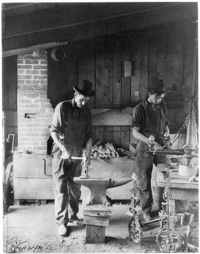Miscellaneous Topics
Clarence Darrow practiced law from 1879 until 1936 and he was a public figure for much of this time. Besides his many courtroom activities he participated in many debates, gave many speeches and wrote often about social, legal and political issues important to him. He was acquainted with many prominent and important people in public life. This section presents a wide variety of information and material about Clarence Darrow, his various interests as well as some of the people he knew or commented about.
|
Excerpt from an Economic Brief titled, "The Closed Shop and Union Security," submitted by the American Federation of Labor. The brief twice cites Clarence Darrow's article, "Why Men Fight for the Closed Shop."
Baxa v. United States (1964).
Excerpt from a petition for certiorari in which Clarence Darrow is quoted for his criticism of conspiracy laws.
The 1880 Census from Ashtabula County, Ohio shows an entry for Clarence Darrow and his wife Jessie. Darrow's occupation is listed as "lawyer" and his wife's occupation is listed as "keeping house." Darrow's entry is eighth from the bottom.
Marriage Certificate of Ammirus Darrow and Katherine Donahue (1898).
Ammirus Darrow, Clarence Darrow's father, remarried in 1898. From the Clarence Darrow Papers.
1900 Census: Chicago.
Clarence Darrow is number 16 on this page from 1900 Census for Chicago.
Strike in the Copper Mining District of Michigan.
"Letter from the Secretary of Labor, Transmitting in Response to a Senate Resolution of January 29, 1914, a Report in Regard to the Strike of Mine Workers in the Michigan Copper District which Began on July 23, 1913." Excerpt with references to Clarence Darrow's involvement in trying to end the strike.
Clarence Darrow listed in Illinois House of Representatives (1914).
Clarence Darrow is listed ninth in the left column. Page from the Blue Book of the State of Illinois.
Capital Punishment: Hearings Before the Subcommittee on Judiciary of the Committee on the District of Columbia (1926).
Hearings held from January 28 through February 13, 1926 on H.R. 349 and H.R. 4498. Clarence Darrow's statement begins on page 30 of this pdf document which is page 57 of this hearing. There are several critical references made about Clarence Darrow by other speakers. For example, on page 59 of the pdf is a short discussion of how much Darrow was paid for his defense of Leopold and Loeb. Most of page 61 consists of criticism about Darrow's views and an extended discussion about Darrow begins on page 80.
FBI File: 62-45014 on Clarence Seward Darrow (1936).
FBI file on Clarence Darrow. http://foia.fbi.gov/darrow/darrow1.pdf
Capital Punishment: Hearings Before Subcommittee No. 3 of the Committee of the Judiciary.
House of Representatives hearings on bills to suspend or abolish the death penalty held in March and May 1972. Several references are made to Clarence Darrow.
What Shall We Do for the Poor? by Paul Darrow.
Presentation by Clarence Darrow's son Paul to the Special Committee of the House of Representatives appointed to investigate the Interstate Migration of Destitute Citizens in August 1940. From the Papers of Clarence Darrow.
This version of Whitehead's piece appears in The Little Blue Book No. 1464, E. Haldeman-Julius, ed.
The Social Monster: A Paper on Communism and Anarchism by John Most (1890).
Johann (John) Most (1846 - 1906) was one of the most notorious anarchists in the United States. Born in Germany, he moved to London in 1878 where he became an anarchist and began publishing Die Freiheit. He published an article in 1881 praising the assassination of Tsar Alexander II of Russia for which he was arrested and sent to prison for 18 months. After getting out of prison in 1882 he emigrated to the United States and began living in Chicago. Most continued to publish Die Freiheit as well as other material and making speeches about anarchism while in the United States. His most notorious publication The Science of Revolutionary Warfare was published in 1885. In this work Most gave instructions for creating and using bombs. Most continued to publish Die Freiheit and books and pamphlets on anarchism until he died in Cincinnati, Ohio, in 1906. While not directly involved in any cases Clarence Darrow worked on, Most influenced several people Darrow came in contact with and sometimes defended. For example in 1904 Darrow and Edgar Lee Masters tried to keep John Turner, an avowed anarchist, from being deported back to Great Britain. Part of the evidence against Turner was a note found in his pocket about a mass-meeting at which speeches would be given by Turner and John Most and several other speakers. Most also influenced several of the Haymarket anarchists.
Biographical Sketch of Hon. John Peter Altgeld, Twentieth Governor of Illinois by Edward Osgood Brown (1905).
"Read before the Chicago Historical Society December 5, 1905 On the Occasion of the Presentation to the Society of Governor Altgeld's Portrait the Gift of Joseph S. Martin of Chicago." From the Internet Archive.
Trial of William Penn and How Voltaire Fooled Priest & King by Clarence Darrow (1922).
"Ten Cent Pocket Serious" pamphlet containing the Trial of William Penn followed by Clarence Darrow's How Voltaire Fooled Priest & King. Edited by E. Haldeman-Julius.
Short interviews with prominent citizens including Clarence Darrow on the issue of tax cheating. Published in The Public.
Clarence Darrow as Candidate (1902).
Short reference to Darrow as candidate for Illinois legislature. Published in The Public.
John Peter Altgeld's Funeral (1902).
Description of funeral services for John Peter Altgeld. Published in The Public.
Perils of Trade Unionism (1903).
Brief commentary about a speech Clarence Darrow gave about trade unionism to the Henry George Association in Chicago.
Article Praising Clarence Darrow as Illinois Legislature (1903).
Article praising Clarence Darrow for voting against a bill that would appropriate $5,000 for the widow of his mentor and former Governor of Illinois John Peter Altgeld.
In The Fight
Poem inscribed to Clarence S. Darrow by Dr. John Byers Wilson. From Tomorrow magazine (1907).
"Who Is This Man Darrow?" (1907).
Published in The Painter and Decorator by the Brotherhood of Painters, Decorators, and Paperhangers of America.
Clarence S. Darrow To the Prisoners in Chicago County Jail.
Description of Clarence Darrow's controversial address to Cook County prisoners in 1902. From volume 25 of The Railway Conductor (1908).
The Spoon River Anthology--The Storm-Center of the Latest Literary Controversy (1915).
Discussion of Edgar Lee Masters "The Spoon River Anthology" from Current Opinion (1915). The work made Masters' reputation and became one of the most widely read works of its time. Masters was Clarence Darrow's law partner for 8 years but they had a stormy relationship.
What Free Land Would Mean to Humanity: Clarence Darrow Discusses Economic Evils (1917).
Page two contains a description of dinner presentation by Clarence Darrow given at the Los Angeles Single Tax Club. Published in The Locomotive Firemen and Enginemen's Magazine.
George Burman Foster (1919).
Short article about George Burman Foster in The Biblical World. Foster was a well-known theologian and professor of philosophy of religion at the University of Chicago from 1905 until his death in 1918. Clarence Darrow and Foster were very good friends.
George Burman Foster.
Memorials to George Burman Foster in The University Record (1919). Clarence Darrow and Foster were best friends.
Darrow Debates Like a Wet Lamb (1926).
Debate between James Schermerhorn and Clarence Darrow about prohibition. Published in the Dearborn Independent Magazine by Henry Ford. Schermerhorn was the founder of the Detroit Times.
Clarence Darrow: The Big Minority Man by George G. Whitehead (1929).
Whitehead traveled with Darrow around the country to promote Darrow's debates on subjects ranging from prohibition to the question "Is Man a Machine?" and provides this fascinating account. Whitehead explains: "Mr. Darrow has been branded "The Big Minority Man" and the title fits him like an old slouch hat. In a debate he expects 80 percent of the audience to be against him, but he adds: "If the majority were with me I would think I was wrong.""(page 4).
Description of political speeches before a Republican crowd during the Presidential campaign. Story is in the center and is titled "Thurston Talks for McKinley." Published in The San Francisco Call.
Clarence Darrow's Sarcasm (1903).
Short reference to speech Clarence Darrow gave about Leo Tolstoy. From the Davis County Clipper.
“Pacifists Are Enemies of the Republic,” Says Clarence Darrow.
Newspaper article about a speech Clarence Darrow gave criticizing pacifists and supporting United States military involvement in World War I. Published in The Richmond Palladium And Sun-Telegram, November 13, 1917.
Schopenhauer's Son (1922).
Description of Clarence Darrow's pessimism and Darrow's short eulogy at the funeral of his friend George Burman Foster. Published in A Thousand and One Afternoons in Chicago by Ben Hecht, a newspaper column in the Chicago Daily News.
Clarence Darrow had to read McGuffey's Readers in grade school. Darrow recalled in his autobiography: "I know that I began at the primer and read over and over the McGuffey readers, up to the sixth, while at the district school. I have often wondered if there was such a man as Mr. McGuffey and what he looked like. To me his name suggested side-whiskers which, in Kinsman, meant distinction. I never could understand how he learned so much and how he could have been so good. I am sure that no set of books ever came from any press that was so packed with love and righteousness as were those readers. Their religious and ethical stories seem silly now, but at that time it never occurred to me that those tales were utterly impossible lies which average children should easily have seen through. McGuffey furnished us many choice and generally poetical instructions on conduct and morals. And the same sort were found in other books, also. . . . From what I see and hear of the present generation I should guess that Doctor McGuffey and his ilk lived in vain."
Our Penal Machinery and Its Victims, by John P. Altgeld (1886).
Judge Richards, a police judge in Ashtabula, gave me my first sane idea of crime and criminals. He gave me a book, Our Penal Machinery and Its Victims, by Judge John P. Altgeld, of Chicago, which was a revelation to me. This book and the author came to have a marked influence upon me and my future." - Clarence Darrow, The Story of My Life. From the Internet Archive.
Ad Brochure for The Story of My Life by Clarence S. Darrow.
Courtesy of the Special Collections Department, University of Iowa Libraries.
Great Speeches of Col. R. G. Ingersoll (1892).
Colonel Robert Green Ingersoll (1833 - 1899) was a Civil War veteran, noted orator, political leader, and forceful defender of agnosticism. Ingersoll greatly influenced Clarence Darrow. Because of his agnosticism Ingersoll was referred to by some of his critics as "Injuresoul."
A Message to Garcia and Thirteen Other Things: As Written by Fra Elbertus (1901).
Fra Elbertus was a pen name of Clarence Darrow's friend Elbert Hubbard. Hubbard reportedly wrote the inspirational essay "A Message to Garcia" in about an hour, and it became a sensational hit. It has reportedly sold over 40 million copies and has been translated into 37 languages. The essay is used by corporations and the military as an inspirational training guide for accomplishing organizational missions. From the Internet Archive.
Oratory: Its Requirements and Its Rewards by John P. Altgeld (1901).
Advice on oratory skills by Clarence Darrow's mentor John Peter Altgeld. From the Internet Archive.
The Cost of Something for Nothing by John Peter Altgeld (1904).
John Peter Altgeld was a mentor to Clarence Darrow. This was written just before Altgeld's death and contains an introduction by Clarence Darrow. From the Internet Archive.
Ad for Clarence Darrow's A Persian Pearl (1904).
Published in Bethink Yourselves!: A Letter on the Russian-Japanese War by Leo Tolstoy.
The New Star Chamber: And Other Essays By Edgar Lee Masters (1904).
Edgar Lee Masters was a law partner of Clarence Darrow from 1903 until 1911. A noted writer and poet, this book contains thirteen political essays some of which were previously published in the Chicago Chronicle. The essays helped earn Masters a reputation as a "radical." From the Internet Archive.
The Jungle by Upton Sinclair (1905).
Upton Sinclair was a Pulitzer Prize-winning author and social activist. He had given Clarence Darrow a copy of his book The Jungle and later wrote a letter to Darrow dated September 23, 1905 asking if he had read it and asking Darrow's legal opinion about whether it amounted to libel. Sinclair originally intended the book to expose the harsh and unfair working conditions endured by poor immigrants. But the general public was more shocked by the descriptions of unsanitary and dangerous food processing practices. The book was so influential that it led to the passage on the same day of the federal Meat Inspection Act of 1906 and the Pure Food and Drug Act of 1906 which in turn led to the establishment of the Food and Drug Administration. From the Internet Archive.
Memorandum of Agreement for publication of An Eye for an Eye (1905).
Clarence Darrow's agreement with the publisher Fox, Duffield & Co of New York.
The Finality of the Christian Religion by George Burman Foster (1906).
Publication of two lectures before the Harvard Summer School of Theology in 1902 and 1903. George Burman Foster was Professor of the Philosophy of Religion at the University of Chicago. Foster was a very prominent theologian, but he was also controversial because of his liberal interpretation of the Bible. George Burman Foster was one Clarence Darrow's best friends.
Advertisement for Works by Clarence Darrow described as Socialist Literature (1907).
From Socialism Inevitable: (Wilshire editorials) by Henry Gaylord Wilshire.
Review of Clarence Darrow's An Eye for an Eye (1908).
Short review of Clarence Darrow's book in The Bookman: A Review of Books and Life.
SILMA SILMASTA: Finnish translation of An Eye for An Eye (1908).
Cover, title page and first page from a Finnish translation of Clarence Darrow's book, An Eye for An Eye.
Land and Taxation: A Conversation Between David Dudley Field and Henry George (1911).
Excerpt from Our Land and Land Policy by Henry George in which George explains his single tax theory and how it would apply to land ownership. Clarence Darrow was an ardent supporter of George's single tax theory for many years.
The Flag Superstition.
Excerpt from Victor Berger's 1912 book Broadsides. Berger comments on a 1907 newspaper article about Clarence Darrow refusing to stand for the singing of the Star Spangled Banner at a hotel restaurant in Spokane, Washington.
Single Tax Exposed by Charles H. Shields (1912).
Subtitled, "an Inquiry Into the Operation of the Single Tax System as Proposed by Henry George in Progress and Poverty, the Book from which All Single Tax Advocates Draw Their Inspiration, Revealing the True and Real Meaning of Single Tax, which is Land Communism." Author was Secretary of the Oregon Equal Taxation League. From the Internet Archive.
My Life Out of Prison by Donald Lowrie (1915).
Excerpt discussing Clarence Darrow's stance against capital punishment. Donald Lowrie was convicted of burglary and sentenced to fifteen years in San Quentin State Prison. He served ten years and then wrote a book called My Life in Prison in which he argued for prison reform. He later wrote My Life Out of Prison. Lowrie was an influential prison reformer.
Spoon River Anthology by Edgar Lee Masters (1915).
Clarence Darrow and Edgar Lee Masters formed a law partnership in 1903 that lasted until 1911 but it was a stormy relationship. Besides being a lawyer, Masters was also a writer and poet. In 1915, Masters published Spoon River Anthology, a collection of poem epitaphs for over two-hundred citizens of fictional Spoon River, Illinois who have died. The work was very popular and established Master as a gifted writer. "It is perhaps not too much to say that the book created a sensation in literary circles. No book of poetry since Longfellow's popular volumes has had so wide a circulation, and none since Walt Whitman's Leaves of Grass has been more vigorously stimulating or shown more originally." Leonidas Warren Payne, History of American Literature. 356 (1919). From the Internet Archive.
Dunne: Judge, Mayor, Governor (1916).
Book about Edward F. Dunne. The book has several references to Clarence Darrow who was a friend of Dunne. From the Internet Archive.
The Pocket Cyclopedia of Temperance By Clarence True Wilson.
In 1910, Clarence True Wilson was appointed General Secretary of the Methodist Board of Temperance, Prohibition, and Public Morals (MBTP). He served in this position for twenty-five years. During Prohibition, the MBTP was an official agency of the northern Methodist Episcopal Church. According to one source, from 1925 to 1935 Clarence Darrow and Wilson held forty-six debates. During the course of their debates and the time they spent together Darrow and Wilson became very good friends. Published by Temperance Society of the M.E. Church, 1916.
The I.W.W.: Its History, Structure and Methods by Vincent St. John (1917).
Vincent St. John was a radical labor leader and one of the most influential early founders of the I.W.W. St. John and about 99 other I.W.W. member including Big Bill Haywood were convicted of violating the Espionage Act in 1918 for interfering with the war effort. Clarence Darrow represented St. John on several appeals before the Seventh Circuit Court of Appeals in 1918 and 1920.
The Cyclopedia of Temperance, Prohibition and Public Morals By Deets Pickett, Clarence True Wilson, and Ernest Dailey Smith (1917).
Clarence True Wilson, one of the authors, became good friends with Clarence Darrow and the two often debated each other over Prohibition. Published under the authority of the Board of Temperance, Prohibition, and Public Morals of the Methodist Episcopal Church. Clarence True Wilson was the General Secretary of this board.
Liquor Prohibition by Archibald Douglas Dabney (1920).
Collection of decisions interpreting various prohibition statutes.
Selected Articles on the Closed Shop (1922).
Affirmative and negative opinions of The Closed Shop, a book compiled by Lamar T. Beman. Several references are made to Clarence Darrow's views.
Kelly's Federal Prohibition Digest by Bernard Kelly (1922).
Effort to include all cases arising under the Prohibition Act as of 1922.
Book Review of Crime: Its Cause and Treatment (1923).
Book review of Clarence Darrow's book in The Catholic World.
To My Friend Abbie Scott Baker (1923).
Inscription Clarence Darrow wrote to Abbie Scott Baker in a copy of his book, Crime: Its Cause and Treatment. Abbie Scott Baker (1871-1944) was a leading member of the Congressional Union for Women's Suffrage and the National Women's Party. In 1917 she was arrested, convicted and served a prison sentence for participating in a suffrage protest in Washington, DC. Baker played a leading role in the passage of the 19th Amendment in 1920.
The Prohibition Mania: A Reply to Professor Irving Fisher and Others by Clarence Darrow & Victor S. Yarros
Clarence Darrow and Victor Yarros published this book in 1927 to refute the book Prohibition at Its Worst written by Professor Irving Fisher of Yale University who was a leading prohibitionist. Fisher was an economist, health campaigner, and eugenicist. He was one of the most prominent and celebrated economists in America during the early part of the twentieth century.
Let Freedom Ring by Arthur Garfield Hays (1928).
Title page and dedication page of Arthur Garfield Hay's book, Let Freedom Ring, which he dedicated to Clarence Darrow, Oswald Garrison Villard and Roger N. Baldwin.
The Red Network: A Who's Who and Handbook of Radicalism for Patriots by Elizabeth Dilling (1934).
Elizabeth Dilling Stokes was a staunch anti-communist and anti-war activist. The purpose of the book was to expose what she considered communist front activity in the United States. Clarence Darrow and many of his friends and acquaintances are listed in the book. Darrow is mentioned numerous times and his short bio is on page 275 of the book which is page 274 of this pdf.
Short bio of Hugh Reid Belknap who defeated Clarence Darrow in their race for Congress in the historic 1896 election. The official vote was 22,075 votes for the Republican Belknap and 21,485 votes for the Democrat Darrow.
Warranty Deed signed by Ammirus and Emily Darrow.
Warranty deed signed by Clarence Darrow's father and mother for a house in the "Connecticut Western Reserve" area in Ohio. Clarence Darrow Papers.
Letters from abolitionists Wendell Phillips & Rev. Parker Pillsbury.
This document includes an extract of a letter written by the abolitionist Wendell Phillips (1811 - 1884), along with a handwritten letter from Rev. Parker Pillsbury (1809 - 1898). Pillsbury was an American minister, abolitionist and supporter of women's rights. Part of the Clarence Darrow papers.
Crimes Against Criminals by Robert G. Ingersoll.
Address given before the New York State Bar Association in Albany, N.Y. January 21, 1890. Ingersoll was an outspoken atheist whom Clarence Darrow admired.
The Sunset Club: Shall the World's Fair Be Open on Sunday?; Women Suffrage; The Eight Hour Day (1891).
Clarence Darrow participated in discussion of these three topics at the Sunset Club in Chicago.
The Tyranny of Public Opinion (1893).
Discussion at the Sunset Club. Participants included Clarence Darrow.
Strikes and Injunctions - The Sunset Club 1894-95.
Clarence Darrow, Henry D. Lloyd and others participated in a discussion at the Sunset Club meeting about strikes and injunctions. The discussion was held at the Grand Pacific Hotel, Thursday October 25, 1894.
Clarence Darrow's Legal Opinion on Publishing a Controversial Paper (1900).
Doctor Denslow Lewis gave a controversial presentation before the American Medical Association (AMA) called "The Gynecologic Consideration of the Sexual Act." The AMA refused to publish the paper in the Journal of the American Medical Association. Denslow later asked Clarence Darrow for legal advice on whether a publisher would face obscenity charges for publishing it.
In Memoriam John Peter Altgeld, Born December 30, 1847, Died March 12, 1902.
Includes the Address of Clarence S. Darrow given at Altgeld's funeral on March 14, 1902.
Clarence Darrow in Who's Who in America (1903).
Who's Who in America was just four years old, having been founded in 1899.
Edward Everett Darrow.
Bio of Edward Everett Darrow (1846 - 1927) who was Clarence Darrow's oldest sibling. From the History of the Class of '70, Department of Literature, Science and the Arts published by the University of Michigan documenting the class of 1870.
The Democratic Convention by Charles Erskine Scott Wood.
Description of the 1904 Democratic Party Convention held in St. Louis. Contains a brief mention of a speech given by Clarence Darrow in which he supported the nomination of William Randolph Hearst for vice president (on page 5 of this pdf document). Published in The Pacific Monthly.
Graft in the Legal Profession by Clarence Darrow (1904).
Discussion held at a meeting of the Physician's Club of Chicago. Published in the Illinois Medical Journal.
Review of Clarence Darrow's Resist Not Evil (1905).
Published in The Open Court: Devoted to the Science of Religion, the Religion of Science, and the Extension of the Religious Parliament Idea.
Clarence Darrow in Who's Who in America (1906).
Who's Who in America began in 1899.
General Catalogue of Officers and Students: 1837-1911.
Brief listing from the University of Michigan showing Ammirus Darrow, an unrelated Darrow, Clarence Darrow, Edward Darrow, another unrelated Darrow and Mary Darrow, along with the years each attended the University. Ammirus was Clarence Darrow's father, Edward was his oldest sibling and Mary was his older sister.
Anecdote about Clarence Darrow.
Brief account of humorous quip by Clarence Darrow as a young lawyer. Published in After Dinner Stories by Famous Men.
Book Review of The Skeleton in the Closet (1915).
Clarence Darrow's essay "The Skeleton in the Closet" was first published in 1899 in his collection A Persian Pearl and Other Essays. This book review is from the Psychoanalytic Review published by the National Psychological Association for Psychoanalysis.
Henry Marison Byllesby.
Short bio of Henry Marison Byllesby (1859 - 1924) who was one of the most prominent electrical engineers of his time. Byllesby worked for Thomas Edison and George Westinghouse. He moved to St. Paul, Minnesota in 1891 to run an electrical company. He formed a power company in 1909 that later became Northern States Power in 1916. The company supplied power throughout Minnesota. He formed H.M. Byllesby & Co. a Chicago-based conglomerate that owned steamships, streetcars and utility companies across the United States. During World War I Byllesby was a prominent supporter of the Allies. Beginning in April 1917 he began working full-time as the Chairman of the Executive Committee of the Chicago Branch of the National Security League. This was a public service organization founded in 1914 to lobby for increased and improved preparation for America's defense against enemies at home and abroad. Byllesby was primarily responsible for the inauguration of a patriotic speaking campaign which opened in Minneapolis in September, 1917 with Samuel Gompers and Clarence Darrow as principal speakers. In 1917 Byllesby accepted a commission as a major and served in the Signal Corps and was later promoted to lieutenant-colonel. He also served in London as the purchasing agent for the American Expeditionary Force. Clarence Darrow knew Byllesby and served with him on the Chicago Branch of the National Security League. Darrow also conferred with Byllesby about investments in gas utilities.
The Peril of Racial Prejudice: A Statement to the Public (1922).
Statement by "citizens of Gentile birth and Christian faith" against Anti-Semitism. Signed by many prominent people including Clarence Darrow. Published in the American Jewish Year Book.
Dinner in Honor of Clarence Darrow to Commemorate his Seventieth Birthday (1927).
The following speakers will respond to toasts: DONALD RICHBERG, Darrow the Lawyer; SHIRLEY J. CASE, Darrow and Religion; WALTER WHITE, Darrow and the Negro; HARRY M. FISHER, Darrow the Advocate; ZONA GALE, Darrow and Literature; FAY-COOPER COLE, Darrow and Science; JOHN HAYNES HOLMES, Darrow the Humanitarian; TOASTMASTER: THOMAS V. SMITH.
Letter Sent by the American Civil Liberties Union (1932).
Letter republished in the The Red Network: A Who's Who and Handbook of Radicalism for Patriots by Elizabeth K. Dilling to expose radicals. Clarence Darrow is listed as a member of the National Committee and Arthur Garfield Hays is listed as Counsel. The caption states: "Facsimile of a letter typical of constant efforts of A.C.L.U. to influence legislation favored by radicals. Signed by John Haynes Holmes, acting Chairman while Harry F. Ward was in Russia. Note names of National Committee and Officers."
Letter from the Public Ownership League of America (1933).
Letterhead shows Clarence Darrow is listed as a member of the Executive Committee of the Public Ownership League of America. The letter was republished in the The Red Network: A Who's Who and Handbook of Radicalism for Patriots, by Elizabeth K. Dilling to expose radicals. Caption states: "Facsimile of significant letter sent out to "Members and Friends" by socialist Public Ownership League. Reveals close ties with Secretary Ickes. See Who's Who for signer of the letter, Carl D. Thompson, and other League leaders listed on letterhead.
Clarence Darrow bio in The Red Network: A Who's Who and Handbook of Radicalism for Patriots by Elizabeth K. Dilling. (1934).
Section from The Red Network: A Who's Who and Handbook of Radicalism for Patriots by Elizabeth K. Dilling. The section is titled, "Who Is Who In Radicalism?" and includes a short bio of Clarence Darrow showing affiliations that earned him inclusion in the Red Network.
Judge William H. Holly (1934).
Short bio of Judge Holly published in The Red Network: A "Who's Who" and Handbook of Radicalism for Patriots. Clarence Darrow and Judge Holly were very good friends.
In Memory of Mr. Clarence Darrow.
Funeral book for Clarence Darrow's funeral service held at Bond Chapel, University of Chicago on March 15, 1938. Courtesy of Special Collections Research Center, University of Chicago Library.
Address Delivered at the Funeral of Clarence S. Darrow by William H. Holly.
Typewritten draft of Judge Holly's eulogy with penciled in style edits.
Affirmative: George Burman Foster. Negative: Clarence Darrow.
The Biology Group of Chicago by Clarence Darrow.
This speech was given by Darrow to the Biology Group, of which he was a founding member.
"Realism in Literature and Art" by Clarence Darrow (1899).
Little Blue Book containing four writings by Clarence Darrow: Realism in Literature and Art, Robert Burns, George Burman Foster (Memorial Address January 12, 1919), Some Paragraphs Addressed to Socialists.
The State; Its Functions and Duties by Clarence Darrow & What Shall We Do With Our Criminals by Judge J.P. Altgeld (1891).
Presentations by Clarence Darrow and John Peter Altgeld at the Sunset Club in Chicago. Also contains information about the Sunset Club. Published in Echoes of the Sunset Club.
The Rights and Wrongs of Ireland by Clarence S. Darrow.
Address delivered at the Central Music Hall, Chicago on November 23, 1895, the anniversary of the execution of the "Manchester Martyrs" (William O'Mera Allen, Michael Larkin, and Michael O'Brien) who were members of the Irish Republican Brotherhood hanged in Salford, England on November 23, 1867. They were executed for killing a policeman during a prison escape.
A Persian Pearl and Other Essays by Clarence S. Darrow (1899).
Clarence Darrow's first book. The table of contents is as follows: (1) A Persian Pearl-9; (2) Walt Whitman-43; (3) Robert Burns-77; (4) Realism in Literature and Art-107; (5) The Skeleton in the Closet-139.
"The Skeleton in the Closet" by Clarence Darrow (1899).
Short story written by Clarence Darrow in 1899.
Crime and Criminals: An Address Delivered to the Prisoners in the Chicago County Jail.
1902 address in which Darrow gives his views about the causes of crime that are so radical that "[s]ome of my good friends have insisted that while my theories are true, I should not have given them to the inmates of a jail." Printed in 1919.
The Doctrine of Assumed Risk by Clarence Darrow (1902).
Part of critical commentary called "Easy Lessons in Law" written by Clarence Darrow and published in Hearst's Chicago Evening American in 1902. Darrow's story involves Tony Salvador, an Italian immigrant, who finds work as on a railroad but who lost a leg after being run over by a train. Tony tries to win compensation in court but the judge ruled that he assumed the risk of working in a dangerous area. This typewritten draft is from the Special Collections Research Center, University of Chicago Library.
Little Louis Epstine by Clarence S. Darrow (1903).
In December 1903 Darrow published this short fiction story in the magazine The Pilgrim. Louis is nine years old, poor and Jewish. He is missing one hand due to an accident when he was much younger. One day in the winter he stays out in the cold selling newspapers because he wants to earn enough money to buy a small Christmas present for his mother. This leads to frostbite and he has to have his only hand amputated. Darrow wrote it as a sad reality check on the traditional cheery Christmas tale. This typewritten draft is from the Special Collections Research Center, University of Chicago Library.
Farmington by Clarence Darrow (1904).
Clarence Darrow's autobiographical novel.
An Eye for an Eye by Clarence Darrow (1905).
Fictional story of a man sentenced to death for killing his wife.
Literary Style by Clarence Darrow (1905).
Darrow offers advice about writing. Published in Tomorrow Magazine.
Speech of Clarence S. Darrow.
Speech about prohibition given at the Opera House in Youngstown Ohio Sunday, May 2, 1909. Among the things Darrow told the audience: "Now, I have practiced law a good many years, and have helped to pick out a good many juries. Anybody can try a case, but you must have a good jury. If I had to defend a criminal case I would never let a prohibitionist on the jury, not if I could help it. A lawyer who would let one of them on a jury, if he could avoid it would be guilty of malpractice."
Liberty vs. Prohibition (1909).
Address by Clarence Darrow at a public meeting held in New Bedford, Mass., on December 4, 1909. The introduction to the address states that, "This city, with Worcester and others, changed from 'dry' to 'wet' by a large majority in the election held a fortnight later."
The Darrow-Lewis Debate on "The Theory of Non-resistance" (1910).
For: Clarence Darrow. Against: Arthur M. Lewis. Garrick Theatre, Chicago.
Marx versus Tolstoy: A Debate (1911).
Clarence S. Darrow and Arthur M. Lewis.
Henry George by Clarence Darrow.
Address at the Henry George Anniversary Dinner of the Single Tax Club, Chicago, September 19th, 1913.
The Cost of War by Clarence Darrow (1914).
Short article published in 1914 by the International Socialist Review in which Clarence Darrow explained his view that the destruction of private property caused by the war would benefit the working class. Darrow believed that the rebuilding that would be needed would help employ people and raise the wages of those who helped rebuild the destroyed property.
How One Painter Worked for Peace by Clarence Darrow (1914).
One page article about the Russian painter Vasily Vasilyevich Vereshchagin. This is a reprint from Darrow's "Realism in Literature and Art". Published in The Metal Polisher, Buffer, and Plater journal by the Metal Polishers, Buffers, Platers & Helpers International Union.
Baccalaureate Address Delivered by Clarence S. Darrow to the Law Graduates of Valparaiso University (1914).
Clarence Darrow's address demonstrates his social philosophy, views about the professional life of lawyers and about the American legal system. Given in Darrow's typical blunt style.
The Chrysalis: Prison Epics by Inmates of State and Federal Institutions (1916).
This excerpt includes a contribution "[w]ritten [e]xpressly for The Chrysalis by the Hon. Clarence Darrow, famous Western Lawyer and author, entitled "Punishment."
The Land Belongs to the People by Clarence Darrow (1916).
Short article in which Darrow argues against private property. Published in Everyman.
Darrow-Foster Debate: "Is Life Worth Living?" (1917).
Affirmative: Professor George Burman Foster; Negative: Clarence S. Darrow.
The War (1917).
Address by Clarence Darrow about World War I. Darrow forcefully explains why America was justified in entering the war. The address was given under the Auspices of the National Security League.
The War in Europe (1918).
Lecture on World War I given by Clarence Darrow before the Chicago Society of Rationalism.
Voltaire by Clarence S. Darrow.
Lecture given in the Court Theater on February 3, 1918.
Response of Clarence Darrow to Birthday Greetings, April 18, 1918.
Birthday celebration held at the Auditorium Hotel, Chicago on Clarence Darrow's 61st birthday.
Darrow-Kennedy Debate: "Are Internationalism and the League of Nations Practical and Desirable Schemes for Ending War?" (1918).
Affirmative: Professor John C. Kennedy. Negative: Clarence Darrow. Garrick Theater, Chicago.
Remarks of Clarence Darrow at the Memorial Services to George Burman Foster and at the Funeral of John P. Altgeld.
The memorial service for George Burman Foster was held on January 12, 1919. The funeral for John P. Altgeld was held on March 14, 1902.
The Hold Up Man by Clarence Darrow (1919).
Short article by Darrow about crime and societal norms.
Darrow-Kennedy Debate: "Will Socialism Save the World?" (1919).
Affirmative: Professor John C. Kennedy, Alderman 27th Ward. Negative: Clarence Darrow. Garrick Theater, Chicago.
Darrow-Kennedy Debate: "Is the Human Race Permanently Progressing Toward a Better Civilization?" (1919).
Darrow takes the negative side of the issue. Professor John C. Kennedy was at one time a professor at the University of Chicago. At the time of the debate, he was an alderman from Chicago's 27th ward.
War Prisoners (1919).
Speech by Clarence Darrow supporting America's involvement in World War I. Darrow's support of the war effort was in sharp contrast to most of his socialist friends. Among his controversial remarks he said, "I have no doubt but what constitutional rights were violated over and over again during the war, and since--and before. In the main, I, as one individual, was willing to see constitutional rights violated during the war." Garrick Theater, Chicago.
Pessimism (1920).
Clarence Darrow lecture under the auspices of the Rationalist Educational Society.
Darrow-Starr Debate: Is Life Worth Living?
Yes: Frederick Starr, Anthropologist, University of Chicago No: Clarence S. Darrow. GARRICK THEATRE Sunday Afternoon, March 28th, 1920.
Darrow-Starr Debate: "Is Civilization a Failure?" (1920).
Affirmative: Clarence Darrow. Negative: Professor Frederick Starr. Garrick Theater, Chicago.
Walt Whitman by Clarence Darrow (1924).
Transcript of presentation given by Clarence Darrow at a dinner honoring Walt Whitman.
Debate on Prohibition (1924).
Debate on the topic "Resolved: That the United States Continue the Policy of Prohibition as Defined in the Eighteenth Amendment" between Clarence Darrow and his friend Dr. John Haynes Holmes, pastor of the Community Church in New York. During the debate Darrow told the audience: "Take out of this world the men who have drank, down through the past, and you would take away all the poetry and literature and practically all the works of genius that the world has produced. What kind of poem do you suppose you would get out of a glass of ice-water?"
Dry-Law Debate (1927).
Clarence Darrow vs. Wayne B. Wheeler held in Carnegie Hall, New York City on April 23, 1927. Wayne B. Wheeler was the general counsel for the Anti-Saloon League of America.
Can the Individual Control His Conduct? (1928).
Clarence Darrow and Thomas Vernor Smith debate "Is man a 'free agent' or is he the slave of his biological equipment?"
The Most Cruel Nation on Earth by Clarence Darrow (1930)..
Criticism of the criminal sentencing policies in the United States. Published in The Island Lantern at the U.S. Penitentiary, McNeil Island, Washington.
Verbatim Report of Clarence Darrow's Testimonial on George A. Schilling (1933).
Testimonial dinner given by the Biology Group. George A. Shilling was a labor movement leader and Secretary of the Illinois State Board of Labor Commissioners. Darrow met Shilling in 1888 at a single tax club meeting and they became lifelong friends. In his autobiography Darrow wrote, "Mr. Shilling was about the first man I met when I came to Chicago, and he has been a close friend ever since." Clarence Darrow, The Story of My Life.
"Attorney for the Defense" by Clarence Darrow.
In 1936 at age 79, Clarence Darrow wrote "Attorney for the Defense" that was published in the May edition of Esquire. Darrow described how to pick a jury and the reasons for seating or rejecting prospective jurors based on ethnicity, class and religious beliefs.
Photos - Key Figures
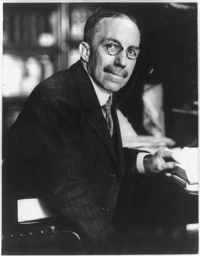

"If a man can think of how often he has been a murderer himself, he would have some sympathy with other fellows who are legally killed; and, of course, we are all murderers at heart—that is, I never killed anybody, but I often read an obituary notice with great satisfaction [laughter], which means that I approve of it alright, and everybody else does the same. Good people get a great kick out of hanging; they always approve of that death. And there you are. It is in all of us; it is only a question of terms and conditions under which it comes out. If we realize it, we are probably a little sorry for the other fellows, whom we know perfectly well were governed by circumstances just as well as we are."
Library of Congress Prints and Photographs Division, LC-DIG-npcc-15481.




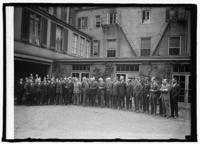





"I remember that at a very early age I was told again and again that John Stuart Mill began studying Greek when he was only three years old. I thought then, as I do today, that he must have had a cruel father, and that this unnatural parent not only made miserable the life of his little boy, but of thousands of other boys whose fathers could see no reason why their sons should be outdone by John Stuart Mill. I have no doubt that my good father thought that all his children ought to be able to do anything that was ever accomplished by John Stuart Mill; and so he did his part, and more, to make us try.\r\n\r\nBut, after all, I feel to-day just as I did long years ago, when with reluctant ear and rebellious heart I heard of the great achievements of John Stuart Mill. I look back to those early years, and still regret the beautiful play-spells that were broken and the many fond childish schemes for pleasure that were shattered because John Stuart Mill began studying Greek when three years old."
Library of Congress Prints and Photographs Division, LC-USZ62-76491.






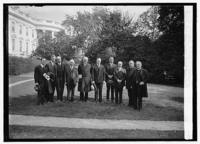
Clarence Darrow published a sharp criticism of the LDA that was published in Plain Talk (volume 2, pp. 257-70, March 1928) in which he began:
"Among the various societies that are engaged in the business of killing pleasure, the Lord's Day Alliance of New York deserves a place of honor. If any poor mortal is caught enjoying life on Sunday its agents gleefully hie themselves to the nearest legislature and urge a law to stop the fun. Their literature and periodicals tell very plainly the kind of business they are in. This association of crape-hangers seems to be especially interested in the State of New York, which contains about one-tenth of the population of the Union, and among them an unusually large number of foreigners and other heathen who have not been taught the proper regard for the sanctity of the Sabbath."
Reportedly, H. L. Mencken reluctantly declined to publish the article in his American Mercury because he thought it was too harsh although he agreed with Darrow's points. Library of Congress Prints and Photographs Division, LC-DIG-npcc-24752.


“I believe I should mention a few well-known Britons that Mrs. Darrow and I saw day after day. One was the Irish-English statesman, T. P. O'Connor. I met him first in America during the war, and it happened that we crossed the Atlantic together; and after that I saw him every time I was in Europe. T. P. O'Connor was a real statesman, the oldest member of Parliament at the time of his death. He was a kindly, lovable man, with a sense of humor that infected all who had the luck to come into his presence. He was ill when we were in London that last time we met, and almost every evening we were at his home in Morpeth Mansions; for weeks before the end he was having dinner-parties, inviting as many as could be accommodated. Doubtless he felt the shadow hanging over his head, and wanted to see us as often as possible.
He loved his friends and was a wonderful host, sipping a few drops from his champagne-glass, toasting us all to our long lives and happiness, never admitting that he was really ill, until gradually he grew weaker and it was evident that he could not recover. We were there early on the very evening before his death. He always talked affectionately of America, and regretted that he should not see it again. No man in Great Britain was more deeply loved and honored than this great human Irishman, T. P. O'Connor.”
Library of Congress Prints and Photographs Division, LC-DIG-ggbain-36019.
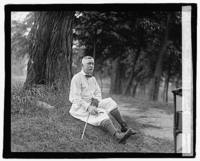

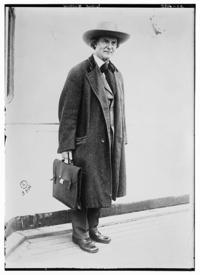


/wiki/Jonathan_Edwards
_(theologian)







ingamerica.loc.gov
/lccn/sn85042462
/1905-06-25/ed-1/seq-28/
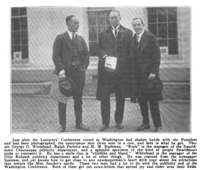

Photo from John Byers Wilson, Reminiscent Rhymes, and Other Verse (1911).

.nypl.org/items/510d47dd
-e3d7-a3d9-e040-e
00a18064a99
Libby Holman (1904 - 1971) was born in Cincinnati, Ohio, on May 23, 1904, to middle-class parents of German Jewish descent but she and her siblings were not raised in the Jewish faith. In 1923 she became the youngest woman to graduate from the University of Cincinnati. She planned to attend law school but was still too young at age 19. She went to New York to pursue work on Broadway and quickly became very successful. She became famous as a torch singer and for her unconventional lifestyle. She would eventually become good friends with Montgomery Clift.
Holman was bisexual and became the lover of Louisa Carpenter, a millionaire member of the du Pont family. Their relationship became the talk of Broadway. In 1931 she married Zachary Smith Reynolds, heir to the R.J. Reynolds tobacco fortune at the time worth about $28 million. On July 5, 1932, Reynolds held a party at his estate near Winston-Salem, North Carolina. Although there are different accounts of exactly what happened some accounts state that Libby told her husband she was pregnant and there was a loud confrontation. Reynolds was shot in the head while in his bedroom and he died the next morning in the hospital. The death was initially declared a suicide. But this was changed to murder and Libby and Ab Walker, Reynolds's best friend, and rumored to be Libby's lover, were charged with the crime.
On August 17, 1932 the actor Richard Bennett wrote a letter to his friend Clarence Darrow in which he referred to Libby Holman: "would you refuse a job defending Libby Holman, who is accused of shooting her husband? The question was put to me a week ago, just before your letter arrived. The movie shorts can come later. You remember Libby Holman. She is the girl who came to me after your speech at my party in Sherman Bungalow, and said, 'Dick, that man is my idea of God.'" Libby went into hiding with Louisa Carpenter, and eventually the case was dropped through the influence of the Reynolds family. Libby gave birth on January 9, 1933, to Christopher "Topper" Reynolds, who became a new heir to the R. J. Reynolds tobacco fortune and the birth was a huge news story.
In 1945 her second husband, Actor Ralph Holmes, died from an overdose of sleeping pills. As she grew older Libby became devoted to civil rights, peace, and disarmament activities. Her 18 years old son Christopher "Topper" died on August 7, 1950 along with a friend while trying to climb Mount Whitney, the highest peak in the lower 48 states. After a bitter estate fight Libby was reportedly awarded $6,600,000 from her son's share of the Reynolds estate. In Topper's memory, Holman founded the Christopher Reynolds Foundation in 1952. The foundation financed her friend Martin Luther King, Jr.'s visit to India to meet Mahatma Gandhi in 1959. The foundation is still in existence.

Soon after Germany started World War I, Byllesby became a prominent supporter of the Allies. Beginning in April 1917 he began working full-time as the Chairman of the Executive Committee of the Chicago Branch of the National Security League. This was a public service organization founded in 1914 to lobby for increased and improved preparation for America's defense against enemies at home and abroad. Byllesby was primarily responsible for the inauguration of a patriotic speaking campaign which opened in Minneapolis in September, 1917 with Samuel Gompers and Clarence Darrow as principal speakers. In 1917 Byllesby accepted a commission as a major and served in the Signal Corps and was later promoted to lieutenant-colonel. He also served in London as the purchasing agent for the American Expeditionary Force. Clarence Darrow knew Byllesby and served with him on the Chicago Branch of the National Security League. Darrow also conferred with Byllesby about investments in gas utilities.
Photo from volume 4 of Josiah Seymour Currey, Chicago: Its History and Its Builders (1918).

![Letter by Darrow to Alexander Kadison, March 3 [1927].](/riesenfeld_images/darrow/thumbs/Darrow_to_Kadison_030327.jpg)

Photos






![Law Building, University of Michigan, Ann Arbor [between 1890 and 1901]](/riesenfeld_images/darrow/thumbs/imageF-03.jpg)



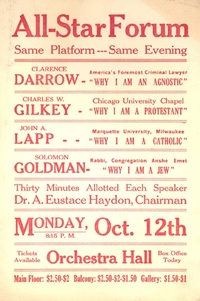

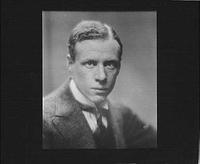

Washington, D.C.

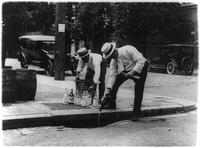

















"It is true that of the people arrested a much larger proportion are convicted in England than here, but what does this prove" Scotland Yard seldom takes any one into custody except on thorough investigation and convincing proof. This is not brought about by the third degree. No officer could remain on the police force in that country if he resorted to the shameless beating and brutality that everywhere prevails in America. When the English police take one into custody he is pretty sure to be guilty. In America it is not uncommon to arrest five or ten, or even fifty, and subject them all to all sorts of indignities in order to find the one man. In the meantime, if the matter is at all sensational, the police are spurred on by continuous startling stories broadcast by the press, and the whole populace gleefully and righteously joins in the man hunt."
Photo taken at the 1912 Republican National Convention held at the Chicago Coliseum, Chicago, Illinois, June 18-22. Library of Congress Prints and Photographs Division, LC-DIG-ggbain-10560.
![Robert G. Ingersoll [between 1865 and 1880]](/riesenfeld_images/darrow/thumbs/Robert_Ingersoll.jpg)
"When I was beginning to absorb and to act, all the young lawyers and speakers were aping Ingersoll's style. No one ever really spoke as he did; one could analyze Ingersoll's speeches if not imitate them; every sentence was rhythmical and in prose; as much so as the best of Keats or Robert Burns, or Housman in poetry. There was never so much as a word awry. There were the exact number of feet to fit the prose measure, and the subject. Evidently most of his speeches were accurately prepared; and, above all, he had something to say. I heard him twice, and with every one in the audience I was entranced. Along with the other aspiring lawyers I tried to adopt his style, and I think I succeeded fairly well, at that time, but it was not Ingersoll. Others tried, too, but most of them failed, so far as I knew. I have found a few who mastered his form of expression, but they lacked what Ingersoll never lacked and that was something worth saying.
I took myself in hand. I made up my mind that I could not be Ingersoll and had no right to try, and did not want to try; that the best I could do was to be myself."
Library of Congress Prints and Photographs Division, LC-DIG-cwpbh-04126.








/wiki/File:Hamlin
_Garland_-_Project
_Gutenberg_etext_
20695.jpg

In March 1931 Clarence Darrow participated as defense counsel in a mock trial of Benedict Arnold. The prosecutor was played by James M. Beck (1861 - 1936) a highly regarded lawyer and politician from Philadelphia, Pennsylvania. Beck served as U.S. Solicitor General and U.S. Representative from Pennsylvania. A group of eminent men and women were enlisted as a "radio jury" and listened to the trial over the radio and rendered a guilty verdict by telegraph. Senator Royal Copeland was a member of the radio jury. The trial was produced by the National Dairy Products Corporation and was broadcast over numerous radio stations on March 22nd and 29th.
Library of Congress Prints and Photographs Division, LC-DIG-npcc-25273.

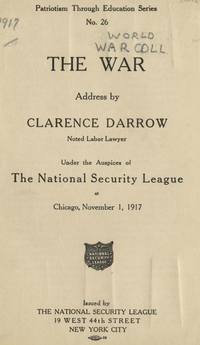







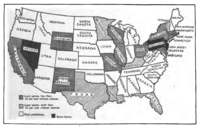



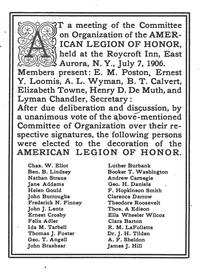








Clarence Darrow supported the entry of the United State into World War I but he was concerned about the civil liberties of those opposed to the war. Library of Congress Prints and Photographs Division, LC-USZC4-7842.





Library of Congress Prints and Photographs Division, LC-USZ62-62930.

loc.pnp/pan.6a27671

Library of Congress Prints and Photographs Division, LC-DIG-ggbain-10079.


![Assistant Secretary of the Treasury and Prohibition Czar Lincoln C. Andrews and the Commissioner of Prohibition, Roy C. Haynes outside of the House of Representatives [between 1925 and 1927]](/riesenfeld_images/darrow/thumbs/Roy_C_Haynes.jpg)



"Take out of this world the men who have drunk, down through the past, and you would take away all the poetry and literature and practically all the works of genius that the world has produced. What kind of poem do you suppose you would get out of a glass of ice-water?"
Library of Congress, LC-USZ62-112447.



![Carter Glass & William Gibbs McAdoo, Jr. [between 1910 and 1920]](/riesenfeld_images/darrow/thumbs/Carter_Glass_and_McAdoo.jpg)

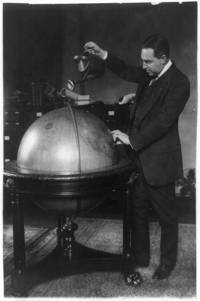




/wiki/File:
Omar_Chayyam.jpg

org/wiki/Lothrop_Stoddard

![Wendell Phillips [between 1853 and 1860]](/riesenfeld_images/darrow/thumbs/Wendell_Phillips.jpg)
Darrow wrote in his 1904 semi-autobiographical work Farmington:
"As a little child, I heard my father tell of Frederick Douglass, Parker Pillsbury, Sojourner Truth, Wendell Phillips, and the rest of that advance army of reformers, black and white, who went up and down the land arousing the dulled conscience of the people to a sense of justice to the slave. They used to make my father's home their stopping-place, and any sort of vacant room was the forum where they told of the black man's wrongs."
Library of Congress Prints and Photographs Division, LC-USZ62-129165.



/wiki/File:
Donald_Lowrie.jpg




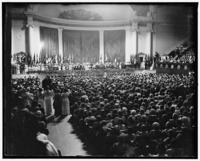









After being elected Jones worked to implement progressive reform. He improved the conditions for the laboring class such as an eight-hour work day for city workers, opened free kindergartens, built parks, and reformed city government. Jones believed political party loyalty divided people too much so he encouraged voters and politicians to renounce political parties. He believed that non-partisan politics would unite people. Jones was too progressive for some of the businessmen and wealthier citizens of Toledo and the Republican Party refused to nominate Jones for the mayor in 1899 but he ran anyway. With overwhelming support he won with seventy percent of the vote. Jones died in office on July 12, 1904. Brand Whitlock succeeded Jones and continued his reform efforts.
Brand Whitlock wrote a letter to Clarence Darrow in February 1903 in which he stated that he and Jones had frequently discussed Darrow running for mayor of Chicago and that Jones would come to Chicago to campaign for Darrow if he ran. Darrow declined to run to the great disappointment of many in Chicago.
Photo from Golden Rule Jones, Mayor of Toledo by Ernest Crosby (1906).


Ickes and Darrow were part of a group that urged President Roosevelt to appoint William H. Holly, one Darrow's long time law partners, as a federal judge to the Northern District of Illinois. Holly was appointed in 1933.
In this photo, Ickes is leaving the White House after a conference with President Roosevelt. Ickes indicates with his fingers that he has two days left in which to decide whether he will run for Mayor of Chicago on the Liberal Coalition ticket. Library of Congress Prints and Photographs Division, LC-DIG-hec-25551.




Clarence Darrow scoffed at free will and he used Henley's words to criticize it. In a lecture titled "Facing Life Fearlessly: The Pessimistic Versus The Optimistic View Of Life" before a combined audience of the Poetry Club and the Liberal Club of the University of Chicago Darrow told the audience:
"The English poet Henley, in one of his poems, probably expressed this about as well as anybody. It looks to me as if he had a case of the rabies or something like that. But people are fond of repeating it. In his brief poem about Fate he says:
I am the master of my fate
I am the captain of my soul.
A fine captain of his soul; and a fine master of his fate! He wasn't master enough of his fate to get himself born, which is rather important, nor to do much of anything else, except brag about it. Instead of being the captain of his soul, as I have sometimes expressed it, man isn't even a deck-hand on a rudderless ship! He is just floating around and trying to hang on, and hanging on as long as he can. But if it does him any good to repeat Henley, or other nonsense, it is all right to give him a chance to do it, because he hasn't much to look forward to, any way."

Upshaw suffered a serious spinal injury at age 18. He spent time in a body cast, in a brace, in a wheelchair, and finally on crutches for all but the last few months of his life. In February 1951 at age 84 he was allegedly cured at the William Branham Healing Service.
Library of Congress Prints and Photographs Division, LC-DIG-hec-19352.


In March 1930 Clarence and Ruby Darrow returned from Europe after a nine month trip abroad. They stopped on the East Coast and Darrow participated in several debates. On March 19 Darrow debated Brookhart on the topic of Prohibition. The debate took place in the Mecca Temple in New York. The audience was overwhelmingly "wet" and Brookhart was subjected to many boos and heckling from the crowd. Earlier in the afternoon Darrow and Brookhart held an informal debate at the Hotel Belmont during a photography session.
Library of Congress Prints and Photographs Division, LC-DIG-npcc-10686.


http://en.wikipedia
.org/wiki/File:Ccpostcard.jpg


"Your friend John Brown - "his soul is marching on" / enlarged and painted by J.W. Dodge, from the original picture taken from life." Library of Congress Prints and Photographs Division, LC-DIG-ppmsca-07773.




